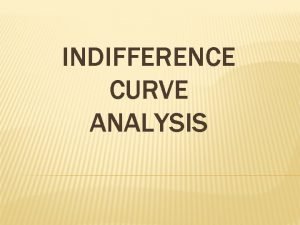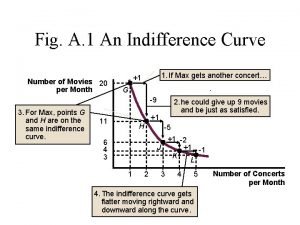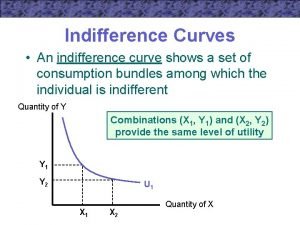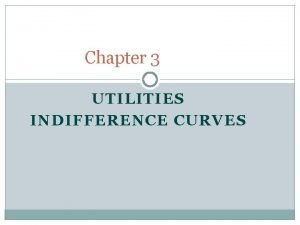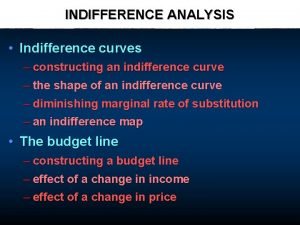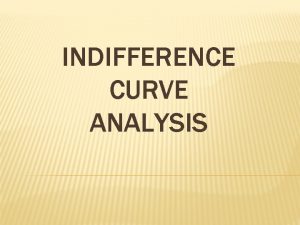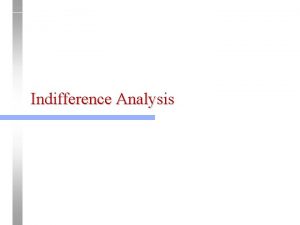Indifference Curve Analysis of Demand Appendix 3 A





- Slides: 5

Indifference Curve Analysis of Demand Appendix 3 A • Consumers attempt to maximize happiness, or utility: U(F, E) over food and entertainment • Subject to an income constraint: Y = PF • F + PE • Graph in 3 -dimensions U Uo Uo E F Slide 1

Consumer Choice - assume consumers can rank preferences, that more is better than less (nonsatiation), that preferences are transitive, and that individuals have diminishing marginal rates of substitution. Then indifference curves slope down, never intersect, and are convex to the origin. U 1 F U 2 Uo 9 7 6 convex 567 E give up 2 F for one E Slide 2

Uo U 1 F Indifference Curves a c b E PE demand • We can "derive" a demand curve graphically from maximization of utility subject to a budget constraint. As price falls, we tend to buy more due to (i) the Income Effect and (ii) the Substitution Effect. E Slide 3

Consumer Choice & Lagrangians • The consumer choice problem can be made into a Lagrangian • Max L = U(F, E) - {PF • F + PE • E - Y } i) L / F = U/ F - PF = 0 ii) L / E = U/ E- PE = 0 } MUF= PF MUE = PE iii) PF • F+ PE • E - Y = 0 • Equations i) and ii) are re-arranged on the righthand-side after the bracket to show that the ratio of MU’s equals the ratio of prices. This is the optimality condition for optimal consumption Slide 4

Optimal Consumption Point • Rearranging we get the Optimality Condition: • MUF / PF = MUE / PE “ the marginal utility per dollar in each use is equal” • Lambda is the marginal utility of money MU 1 = 20, and MU 2 = 50 and P 1 = 5, and P 2 = 25 are you maximizing utility? Suppose Slide 5
